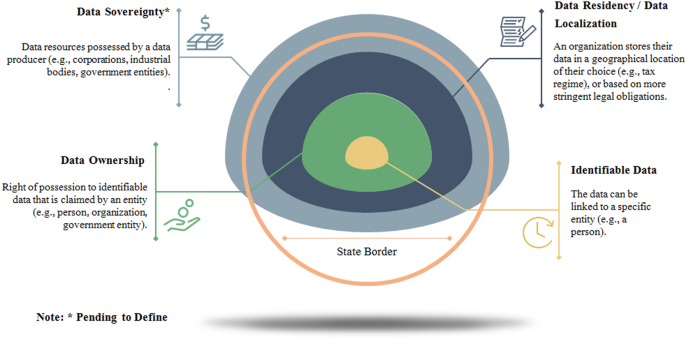Data sovereignty viewed via a narrow lens may smother growth. As we migrate toward a post-pandemic society that is increasingly digital, it is recommended that we employ creative and forward-thinking cyber measures.
Users’ private and personal data is thought to be easily available, ready to be tested, and copied by computers for evaluating user behavior, spying, advertising, and other malevolent aims; hence data privacy and protection have become a topic of dispute.
Covid-19 upended “business as usual” in the first half of 2020, putting global relations to the test as governments try to protect jobs and pacify irritated citizen groups. As European states embraced GDPR, data sovereignty has remained a contentious issue.
In Asia, countries with large populations, such as Indonesia and India, have been weighing options for safeguarding citizens’ data, and preserving data “on-soil” has become a political buzzword. Data sovereignty and data protection can still be a hot topic today, even when legislation is passed to guarantee data privacy.
Cyber hazards and dangers exist regardless of where data is held; it is only through the implementation of robust cybersecurity measures that businesses’ and citizens’ data can be effectively protected.
Instead of taking a repressive and authoritarian approach to data management under the guise of ‘for the greater good,’ it would be preferable to promote an open system that allows for innovation, commerce, and economic progress while ensuring that private and sensitive data is kept safe and secure.
Many countries face similar technical hurdles while attempting to prevent hazards and balancing competing agendas. The cybersecurity strategies listed below will help firms untangle the web of misunderstanding, eliminate the recluse mentality, and confidently embrace digital ecosystems.
Take a holistic approach to cybersecurity.
Enterprises must adopt an intelligence-centric approach to reduce the fear of data breaches and cyber risks. In this scenario, the adage “knowledge is power” is especially true. Leaders must assess external threats and be well-prepared and equipped to deal with adversaries prior to the onset of actual cyber-attacks.
To counter any potential attack, a full understanding of threat actors’ “who, what, and why” is essential. To assess imminent cyber threats and hazards, cybersecurity teams will use a comprehensive threat landscape view to gain insights into digital risk, cyber-attacks, vulnerabilities, hackers’ interest, out of band, early warning, malware, and phishing campaigns.
Cybersecurity teams must take a holistic approach to data management, which necessitates management, strategic, and tactical cyber-intelligence. Not just security operations personnel but also governance and risk leaders are involved in such a multi-layer deployment. To prevent cyber risks from becoming cyber-attacks, corporate risk policies must be changed.
Changes in the regulatory environment are required.
Governments may have passed cyber laws, but that isn’t enough to ensure that they are enforced. Another crucial area would be to require major businesses to conduct vulnerability assessments and risk assessments at least biannually. This will aid in the detection of real-time attacks, as well as the remediation of any current cybersecurity holes.
Another option is to begin assessing attack vectors at least once a year. As companies adopt new digital formats and increase supplier-partner-customer connections, these assessments will reveal new attack surfaces.
It is possible to build a Data Sovereignty Should Govern Modern-Day Security Tactics
in which the discovery of vulnerabilities and flaws is rewarded. This initiative will aid in the growth of the cybersecurity community and encourage a culture of collaborative solutions and knowledge sharing.
People, Processes, Technology, and Governance are all important factors to consider.
Building a minimum level of cyber hygiene is critical for many SMBs aiming to maintain cyber resilience. Employees must be educated on cyber threats and current dangers; thus, ‘people’ is a top concern. This is especially important in order to combat the widespread use of social engineering hacking campaigns and phishing scams.
Businesses must implement layered defenses with gateway-based security, data, endpoint security, automated scanning, regular monitoring, and malware removal from a technological standpoint.
Antivirus, data security, loss detection, as well as VPN solutions must all be included. Firms should execute threat profiling, threat segmentation, risk containerization, and zoning when it comes to processes.
It is both required and prudent to keep the core content encrypted. The basic procedure of performing daily data backups is also an acceptable guideline to follow. In terms of governance, firms should build a robust cybersecurity plan by incorporating strong cyber threat visibility and intelligence program.
Innovation, open systems, entrepreneurship, and interconnection are all perspectives that lead to new growth opportunities. As the globe moves toward a completely digital post-pandemic environment, it is necessary to adopt creative and forward-thinking cyber policies.
Like this post? Checkout our Featured Stories Section






No Comments